Lahore Fort or Shahi Qila in Lahore is spread across 20 hectares and comprises 21 monuments. Emperor Akbar built it in the year 1574. It’s a UNESCO World Heritage Site. As the name suggests, the Fort was built to act as a defense for the ancient city.
Some historical facts and incidents are always unknown to many people. Some such incidents are related to Lahore Fort, which has a history that is linked to the Mughal Era. The builders of these forts were Akbar the Great, Jahangir, and Shah Jahan, who belonged to the Mughal Dynasty. So, it is always interesting to know the facts and reality of the historical past.
How to Reach Lahore Fort:
Lahore Fort is located in the city of Lahore, Pakistan, and is easily accessible by various means of transportation. Here’s how to reach Lahore Fort:
- By Air: The nearest airport to Lahore Fort is Allama Iqbal International Airport, located approximately 14 kilometers away from the Fort. Many airlines offer daily flights to and from major cities in Pakistan and international destinations.
- By Train: Lahore is well-connected to major cities in Pakistan by train, and the Lahore Railway Station is located about 3 kilometers away from the Fort. Several express and local trains run daily from major cities such as Karachi, Islamabad, and Peshawar.
- By Bus: Lahore has an extensive network of public and private buses, and Lahore Fort can be reached by bus from many parts of the city. Many private tour operators also offer bus tours of Lahore, including a visit to the Fort.
- By Taxi: Taxis and ride-hailing services such as Uber and Careem are widely available in Lahore, and many drivers are familiar with the Fort’s location. Taxis can be hired for a full day, which is a convenient option for tourists.
Once you reach Lahore, you can easily reach the Fort, which is located in the heart of the city near the Badshahi Mosque and the Walled City of Lahore.
Historical Importance Of Lahore Fort:
Lahore Fort, also known as Shahi Qila, has a significant historical importance as it is a remarkable example of the rich cultural heritage of the Mughal era in South Asia. The fort has witnessed the rise and fall of many empires and has played a vital role in the history of the region. Here are some of the historical importance of Lahore Fort:
- Mughal Architecture: The Lahore Fort is considered to be one of the finest examples of Mughal architecture. The fort’s construction began during the reign of Emperor Akbar and was completed during the reign of Emperor Jahangir. It reflects the Mughal era’s architectural grandeur, with its impressive gates, pavilions, palaces, and mosques.
- Political Significance: The Lahore Fort was not only a symbol of Mughal power and grandeur but also served as the seat of political power for the Mughal rulers in the region. Many significant events, such as the coronation of Emperor Jahangir, took place here.
- Cultural Significance: The Lahore Fort has played a vital role in the development of the region’s cultural and artistic traditions. The fort’s architecture, paintings, and decorative art are a testament to the creative and artistic skills of the Mughal craftsmen.
- Strategic Significance: The Lahore Fort was strategically located at the crossroads of trade and travel routes, making it an essential military installation during the Mughal era. The fort’s impressive fortifications and walls provided protection from invasions and attacks.
- UNESCO World Heritage Site: The Lahore Fort was declared a UNESCO World Heritage Site in 1981. It is recognized for its outstanding universal value, representing a unique cultural achievement in architecture and art that influenced subsequent building design in the Indian subcontinent.
Overall, the Lahore Fort is a treasure trove of history, culture, and architecture, and is an essential landmark of Pakistan’s cultural heritage.
Interesting Facts Of Lahore Fort:
Sure! Here are some interesting facts about Lahore Fort:
- The Lahore Fort is believed to have been originally built in the 11th century, but it was rebuilt and expanded by various Mughal emperors, especially Emperor Akbar and Emperor Jahangir.
- The Fort’s walls are more than two kilometers long and up to 21 meters high in some places, making it an impressive defensive structure.
- The Sheesh Mahal or “Palace of Mirrors” within the Fort is covered with approximately 50,000 small pieces of mirrors, creating a beautiful reflective surface.
- The Fort has been used as a filming location for various Bollywood and Hollywood movies, including the popular movie “The Amazing Spider-Man” (2012).
- The Fort is also home to the world’s largest picture wall, which features more than 116 frescoes depicting the life and times of Emperor Akbar.
- The Fort’s Naulakha Pavilion has a unique feature where a person standing at one end of the pavilion can hear the slightest whisper from the other end, which is about 60 feet away.
- The Fort was the residence of Maharaja Ranjit Singh, the founder of the Sikh Empire, during the early 19th century.
- The Fort has undergone several renovations and restorations over the years, with the most recent one completed in 2019 to preserve and restore its historic buildings and structures.
These are just some of the interesting facts about Lahore Fort, which adds to its rich history and cultural significance.
What is the Lahore Fort known for?
Lahore Fort, also known as Shahi Qila, is known for its rich history, stunning Mughal-era architecture, and cultural significance. Here are some of the main things that Lahore Fort is known for:
- Mughal Architecture: The Lahore Fort is considered to be one of the finest examples of Mughal architecture in the Indian subcontinent. The Fort’s impressive gates, pavilions, palaces, and mosques are a testament to the Mughal era’s architectural grandeur.
- Historical Significance: Lahore Fort has played a significant role in the region’s history, serving as a seat of political power for various Mughal emperors. It has also witnessed many significant events, such as the coronation of Emperor Jahangir.
- Cultural Significance: The Fort has played an essential role in the development of the region’s cultural and artistic traditions. The Fort’s paintings, decorative art, and other artifacts reflect the Mughal-era creativity and artistic skills of the craftsmen.
- Sheesh Mahal: The Sheesh Mahal or “Palace of Mirrors” within the Fort is one of its most famous attractions. The Palace’s interior is covered with approximately 50,000 small pieces of mirrors, creating a beautiful reflective surface.
- UNESCO World Heritage Site: Lahore Fort was declared a UNESCO World Heritage Site in 1981, recognizing its outstanding universal value and cultural significance in South Asia.
Overall, Lahore Fort is known for its historical, cultural, and architectural significance, making it one of the most popular tourist attractions in Pakistan.
Gates in Lahore Fort
Surprisingly, Lahore‘s Walled City retains its magnificent forts. Lahore‘s Walled City is a collection of many cities within the city. At the center of these cities is the 13 Gates of Lahore fort (also known as Shahi Qila). The 13 Gates of Lahore fort is an important piece of Lahore‘s history and still attracts tourists to the Walled City.
The Gates of Lahore Fort:
Here are the names of all 13 gates of Lahore Fort:
- Akbari Gate
- Alamgiri Gate
- Bhati Gate
- Dehli Gate
- Elephant Gate
- Kashmiri Gate
- Lohari Gate
- Masti Gate
- Mochi Gate
- Roshnai Gate
- Shah Burj Gate
- Shairanwala Gate
- Taxali Gate
Each of these gates has its unique history and architectural style, reflecting the Mughal-era grandeur of Lahore Fort. The gates of Lahore Fort continue to serve as a reminder of the Fort’s rich history and cultural significance.

Delhi Gate is one of the 13 gates of Lahore Fort, located on the western side of the Fort. It was built during the reign of Emperor Akbar in the 16th century and served as the main entrance to the Fort from the direction of Delhi.
The Delhi Gate is a massive structure, with a height of around 70 feet. It is decorated with intricate carvings and calligraphy, reflecting the Mughal-era architectural style. The gate’s façade is adorned with a variety of decorative elements, including geometric patterns, floral motifs, and verses from the Quran.
The Delhi Gate leads to a large courtyard, which is surrounded by high walls and contains several buildings and structures, including the Sheesh Mahal and the Naulakha Pavilion. The gate also served as a military barracks during the British rule of India.
Today, the Delhi Gate is one of the main attractions of Lahore Fort and continues to attract tourists from around the world. The gate serves as a reminder of the Fort’s rich history and cultural significance and is a testament to the Mughal-era architectural grandeur.
Roshni Gate – Lahore Fort:

Roshnai Gate, also known as the “Gate of Lights,” is one of the 13 gates of Lahore Fort. It is located on the southern side of the Fort and was built during the reign of Emperor Akbar in the 16th century.
The Roshnai Gate is a massive structure, with a height of around 70 feet. It is decorated with intricate carvings and calligraphy, reflecting the Mughal-era architectural style. The gate’s façade is adorned with a variety of decorative elements, including geometric patterns, floral motifs, and verses from the Quran.
The Roshnai Gate was named after the hundreds of oil lamps that used to light up the gate at night, giving it a spectacular appearance. The gate leads to a large courtyard, which is surrounded by high walls and contains several buildings and structures, including the Sheesh Mahal and the Naulakha Pavilion.
Today, the Roshnai Gate is one of the main attractions of Lahore Fort and continues to attract tourists from around the world. The gate serves as a reminder of the Fort’s rich history and cultural significance and is a testament to the Mughal-era architectural grandeur.
Akbari Gate – Lahore Fort

Akbari Gate is one of the 13 gates of Lahore Fort, located on the northern side of the Fort. It was built during the reign of Emperor Akbar in the 16th century and is one of the most impressive gates of the Fort.
The Akbari Gate is decorated with intricate carvings and calligraphy, reflecting the Mughal-era architectural style. The gate has a rectangular shape and is flanked by two octagonal towers. The gate’s façade is adorned with a variety of decorative elements, including geometric patterns, floral motifs, and verses from the Quran.
The Akbari Gate leads to the Fort’s Diwan-e-Aam or “Hall of Public Audience,” where the emperor used to hold meetings with his subjects. The Diwan-e-Aam is also decorated with elaborate carvings and frescoes, reflecting the Mughal-era artistic traditions.
Today, the Akbari Gate is one of the main attractions of Lahore Fort and continues to attract tourists from around the world. The gate serves as a reminder of the Fort’s rich history and cultural significance and is a testament to the Mughal-era architectural grandeur.
Alamgiri Gate – Lahore Fort:

Alamgiri Gate is the main entrance to Lahore Fort, also known as Shahi Qila, located on the eastern side of the Fort. It was built during the reign of Emperor Aurangzeb in the 17th century and is one of the most impressive gates of the Fort.
The Alamgiri Gate is decorated with intricate Mughal-era carvings, reflecting the architectural style of the period. The gate’s façade is adorned with a variety of decorative elements, including geometric patterns, floral motifs, and calligraphy.
The gate leads to a large courtyard, which serves as the main entrance to the Fort. The courtyard is surrounded by high walls and contains several buildings and structures, including the Diwan-e-Aam and the Sheesh Mahal.
The Alamgiri Gate has played a significant role in the history of Lahore Fort and the region. The gate witnessed many significant events, including the coronation of Emperor Jahangir and the Sikh rule of Punjab in the 19th century. The gate also played a role in the Indian Rebellion of 1857, when the British forces used it as a base to attack the rebels.
Today, the Alamgiri Gate is one of the main attractions of Lahore Fort and continues to attract tourists from around the world. The gate serves as a reminder of the Fort’s rich history and cultural significance and is a testament to the Mughal-era architectural grandeur.
Shah Burj Gate – Lahore Fort:

Shah Burj Gate, also known as the “Royal Tower Gate,” is one of the 13 gates of Lahore Fort. It is located on the northern side of the Fort and was built during the reign of Emperor Jahangir in the early 17th century.
The Shah Burj Gate is a grand structure, with a height of around 70 feet. It is adorned with intricate carvings and calligraphy, reflecting the Mughal-era architectural style. The gate’s façade is decorated with a variety of decorative elements, including geometric patterns, floral motifs, and verses from the Quran.
The Shah Burj Gate leads to a large courtyard, which is surrounded by high walls and contains several buildings and structures, including the Jahangir’s Quadrangle and the Samadhi of Ranjit Singh. The gate is also located near the Sheesh Mahal, which is one of the most popular tourist attractions in Lahore Fort.
The Shah Burj Gate played a significant role in the history of Lahore Fort and the region. It was used by the Mughal emperors to enter the Fort and was also used by the British during their rule of India. The gate was also the site of many significant events, including the coronation of Emperor Shah Jahan.
Today, the Shah Burj Gate is one of the main attractions of Lahore Fort and continues to attract tourists from around the world. The gate serves as a reminder of the Fort’s rich history and cultural significance and is a testament to the Mughal-era architectural grandeur.
Kashmiri Gate – Lahore Fort:

Kashmiri Gate is one of the 13 gates of Lahore Fort, located on the eastern side of the Fort. It was built during the reign of Emperor Jahangir in the early 17th century and served as the main entrance to the Fort from the direction of Kashmir.
The Kashmiri Gate is a magnificent structure, with a height of around 60 feet. It is adorned with intricate carvings and calligraphy, reflecting the Mughal-era architectural style. The gate’s façade is decorated with a variety of decorative elements, including geometric patterns, floral motifs, and verses from the Quran.
The Kashmiri Gate leads to a large courtyard, which is surrounded by high walls and contains several buildings and structures, including the Akbari Gate, Sheesh Mahal, and the Naulakha Pavilion. The gate was also used by the British during their rule of India.
Today, the Kashmiri Gate is one of the main attractions of Lahore Fort and continues to attract tourists from around the world. The gate serves as a reminder of the Fort’s rich history and cultural significance and is a testament to the Mughal-era architectural grandeur. Visitors can explore the gate and the surrounding structures and learn about the history and culture of the region.
Taxali Gate – Lahore Fort:

Taxali Gate is one of the 13 gates of Lahore Fort, located on the western side of the Fort. It was built during the reign of Emperor Akbar in the 16th century and served as the main entrance to the Fort from the direction of Taxila.
The Taxali Gate is a grand structure, with a height of around 60 feet. It is decorated with intricate carvings and calligraphy, reflecting the Mughal-era architectural style. The gate’s façade is adorned with a variety of decorative elements, including geometric patterns, floral motifs, and verses from the Quran.
The Taxali Gate leads to a large courtyard, which is surrounded by high walls and contains several buildings and structures, including the Diwan-e-Aam and the Moti Masjid. The gate was also used by the British during their rule of India.
Today, the Taxali Gate is one of the main attractions of Lahore Fort and continues to attract tourists from around the world. The gate serves as a reminder of the Fort’s rich history and cultural significance and is a testament to the Mughal-era architectural grandeur. Visitors can explore the gate and the surrounding structures and learn about the history and culture of the region.
Mochi Gate – Lahore Fort:

Mochi Gate is not located within Lahore Fort but is a historic gate of the walled city of Lahore, which is adjacent to the Fort. It was built during the Mughal era in the 17th century and served as one of the 13 gates of the walled city.
The Mochi Gate is a grand structure, with a height of around 60 feet. It is decorated with intricate carvings and calligraphy, reflecting the Mughal-era architectural style. The gate’s façade is adorned with a variety of decorative elements, including geometric patterns, floral motifs, and verses from the Quran.
The Mochi Gate leads to a bustling bazaar and several historic landmarks, including the Badshahi Mosque and Lahore Fort. The gate has witnessed many historic events, including the Siege of Lahore by the Sikhs in the early 19th century.
Today, the Mochi Gate is one of the main attractions of the walled city of Lahore and continues to attract tourists from around the world. The gate serves as a reminder of the city’s rich history and cultural significance and is a testament to the Mughal-era architectural grandeur. Visitors can explore the gate and the surrounding bazaar and learn about the history and culture of the region.
Bhati Gate – Lahore Fort:
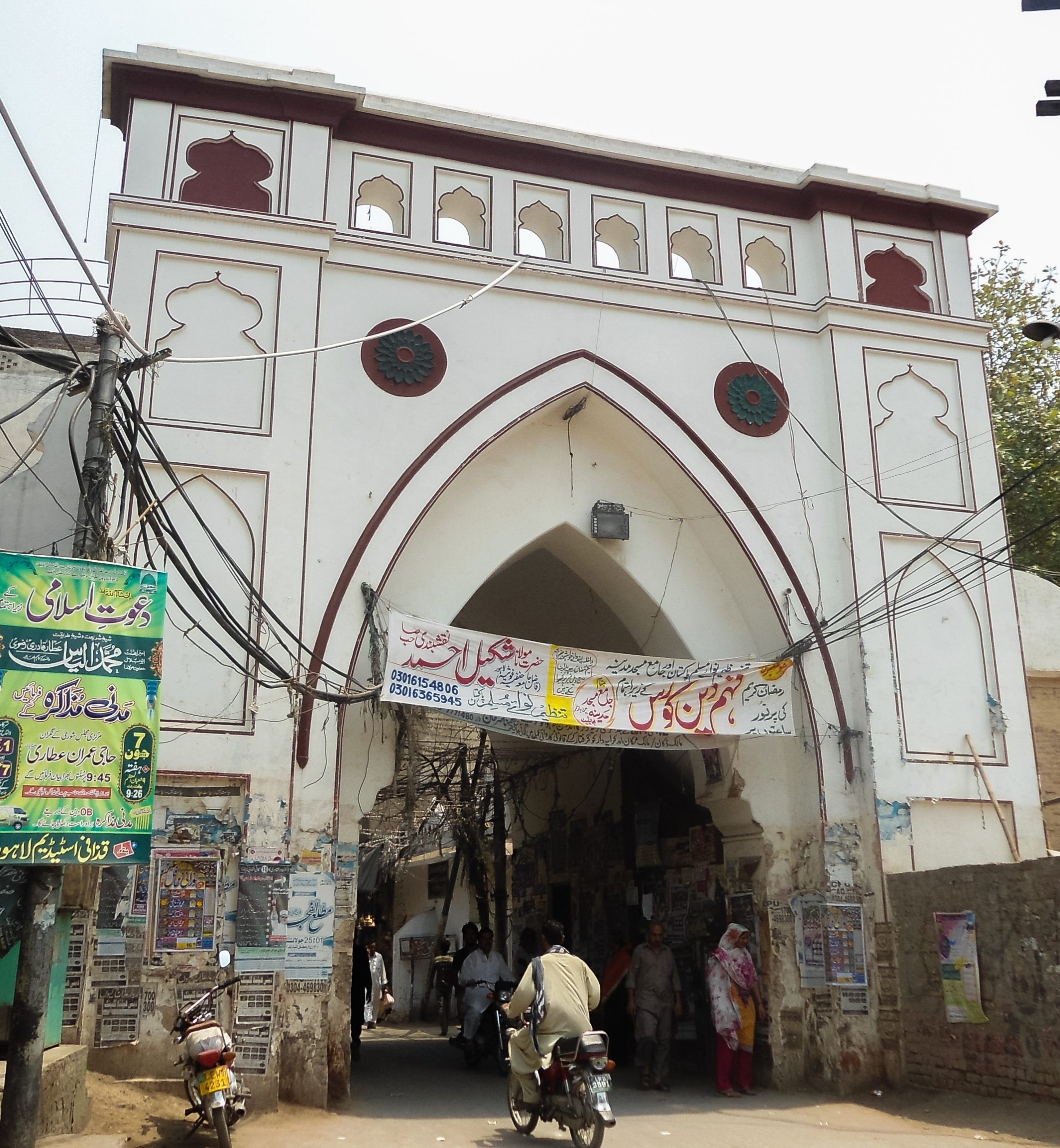
Bhati Gate is not located within Lahore Fort but is a historic gate of the walled city of Lahore, which is adjacent to the Fort. It was built during the Mughal era in the 17th century and served as one of the 13 gates of the walled city.
The Bhati Gate is a grand structure, with a height of around 60 feet. It is decorated with intricate carvings and calligraphy, reflecting the Mughal-era architectural style. The gate’s façade is adorned with a variety of decorative elements, including geometric patterns, floral motifs, and verses from the Quran.
The Bhati Gate leads to a bustling bazaar and several historic landmarks, including the Badshahi Mosque and Lahore Fort. The gate has witnessed many historic events, including the Siege of Lahore by the Sikhs in the early 19th century.
Today, the Bhati Gate is one of the main attractions of the walled city of Lahore and continues to attract tourists from around the world. The gate serves as a reminder of the city’s rich history and cultural significance and is a testament to the Mughal-era architectural grandeur. Visitors can explore the gate and the surrounding bazaar and learn about the history and culture of the region.
Elephant Gate – Lahore Fort:
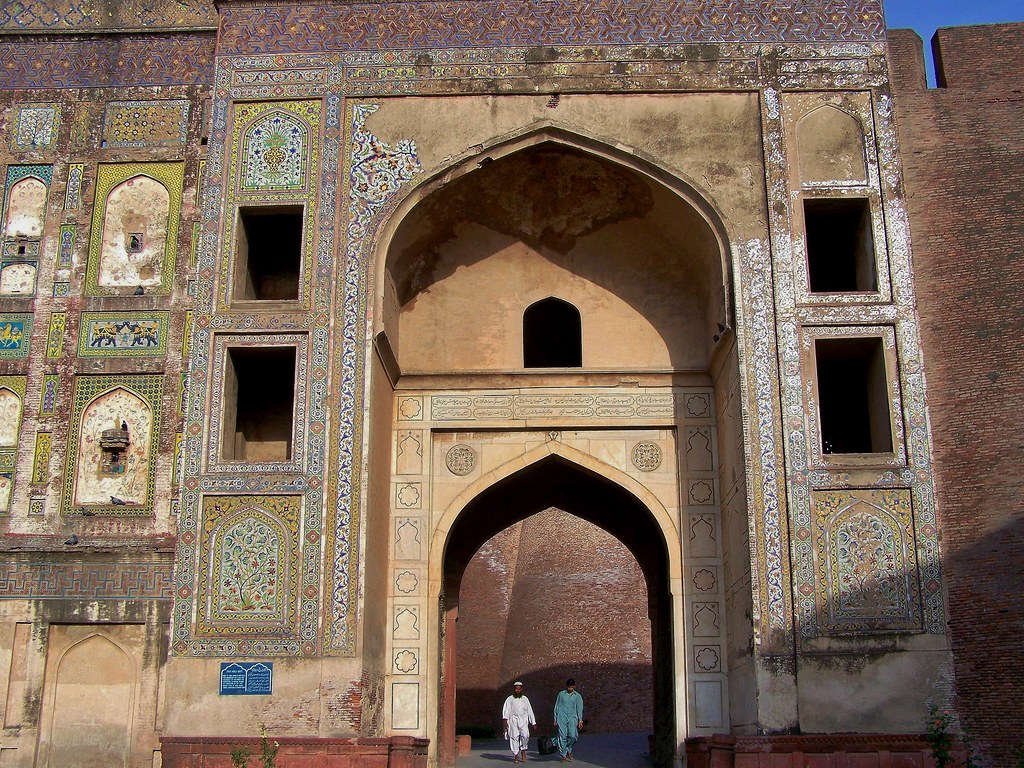
The Elephant Gate is one of the historic gates of Lahore Fort, located on the eastern side of the Fort. It was built during the Mughal era in the 17th century and served as the main entrance to the Fort from the direction of the elephant stable.
The Elephant Gate is a grand structure, with a height of around 70 feet. It is decorated with intricate carvings and calligraphy, reflecting the Mughal-era architectural style. The gate’s façade is adorned with a variety of decorative elements, including geometric patterns, floral motifs, and verses from the Quran.
The Elephant Gate leads to a large courtyard, which is surrounded by high walls and contains several buildings and structures, including the Diwan-e-Aam and the Moti Masjid. The gate was also used by the British during their rule of India.
Today, the Elephant Gate is one of the main attractions of Lahore Fort and continues to attract tourists from around the world. The gate serves as a reminder of the Fort’s rich history and cultural significance and is a testament to the Mughal-era architectural grandeur. Visitors can explore the gate and the surrounding structures and learn about the history and culture of the region.
Lohari Gate – Lahore Fort:
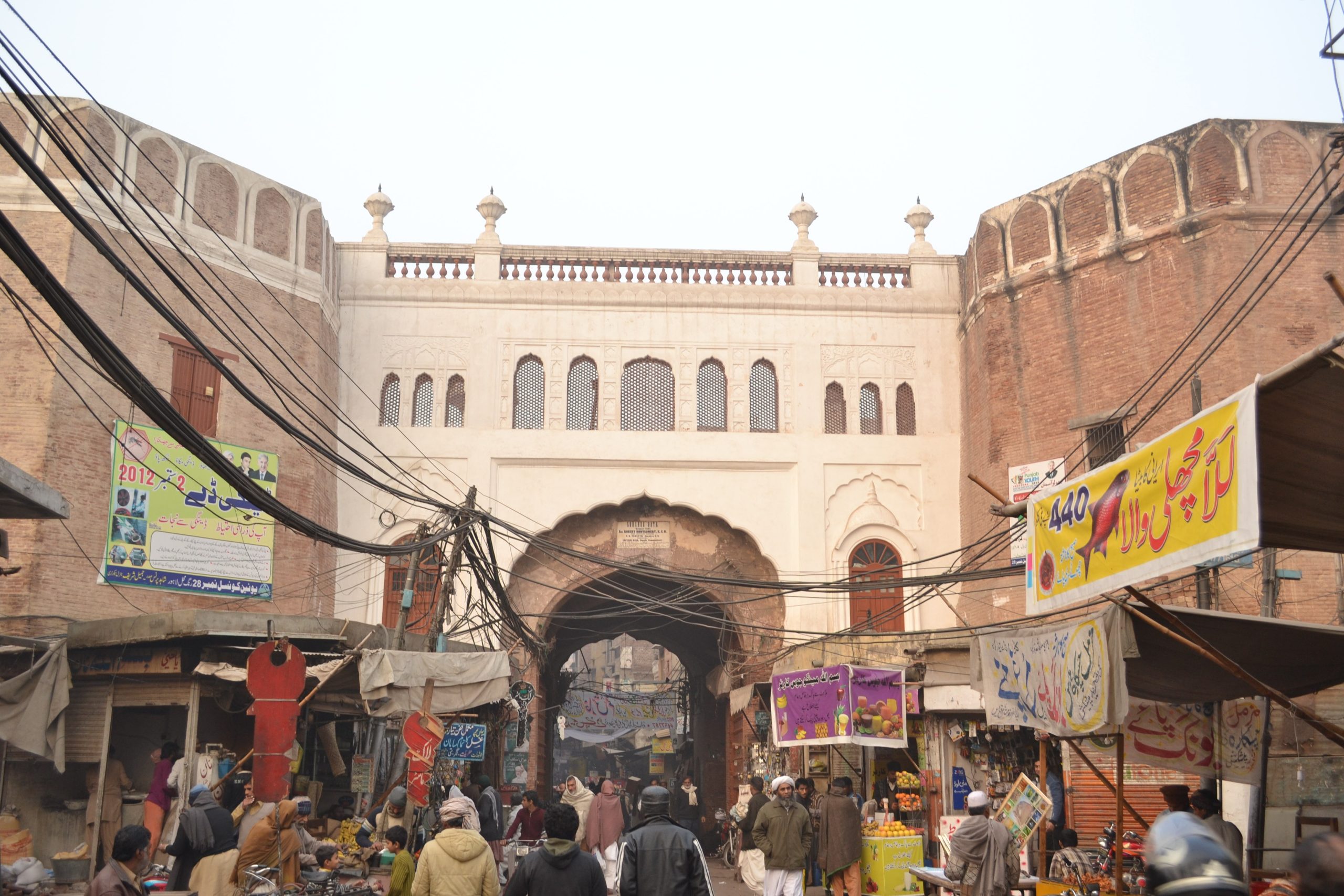
Lohari Gate is not located within Lahore Fort but is a historic gate of the walled city of Lahore, which is adjacent to the Fort. It was built during the Mughal era in the 17th century and served as one of the 13 gates of the walled city.
The Lohari Gate is a grand structure, with a height of around 60 feet. It is decorated with intricate carvings and calligraphy, reflecting the Mughal-era architectural style. The gate’s façade is adorned with a variety of decorative elements, including geometric patterns, floral motifs, and verses from the Quran.
The Lohari Gate leads to a bustling bazaar and several historic landmarks, including the Badshahi Mosque and Lahore Fort. The gate has witnessed many historic events, including the Siege of Lahore by the Sikhs in the early 19th century.
Today, the Lohari Gate is one of the main attractions of the walled city of Lahore and continues to attract tourists from around the world. The gate serves as a reminder of the city’s rich history and cultural significance and is a testament to the Mughal-era architectural grandeur. Visitors can explore the gate and the surrounding bazaar and learn about the history and culture of the region.
Masti Gate – Lahore Fort:
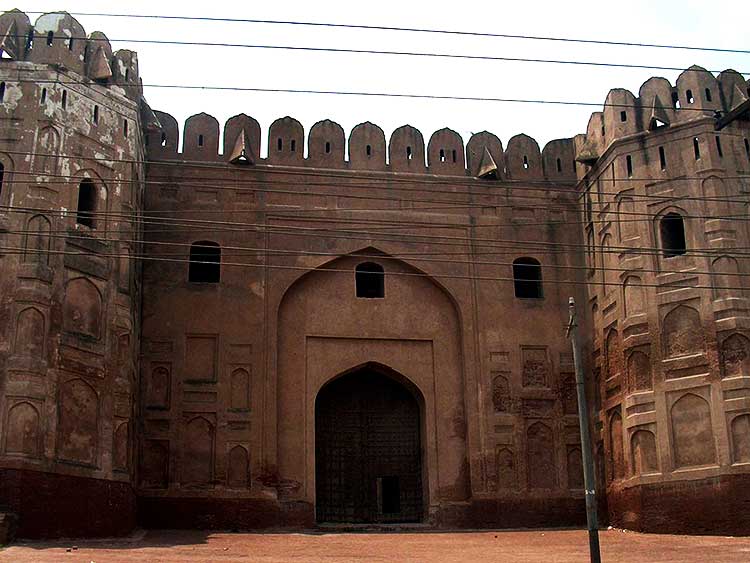
Masti Gate is not located within Lahore Fort but is a historic gate of the walled city of Lahore, which is adjacent to the Fort. It was built during the Mughal era in the 17th century and served as one of the 13 gates of the walled city.
The Masti Gate is a grand structure, with a height of around 50 feet. It is decorated with intricate carvings and calligraphy, reflecting the Mughal-era architectural style. The gate’s façade is adorned with a variety of decorative elements, including geometric patterns, floral motifs, and verses from the Quran.
The Masti Gate leads to a bustling bazaar and several historic landmarks, including the Badshahi Mosque and Lahore Fort. The gate has witnessed many historic events, including the Siege of Lahore by the Sikhs in the early 19th century.
Today, the Masti Gate is one of the main attractions of the walled city of Lahore and continues to attract tourists from around the world. The gate serves as a reminder of the city’s rich history and cultural significance and is a testament to the Mughal-era architectural grandeur. Visitors can explore the gate and the surrounding bazaar and learn about the history and culture of the region.
Shairanwala Gate – Lahore Fort
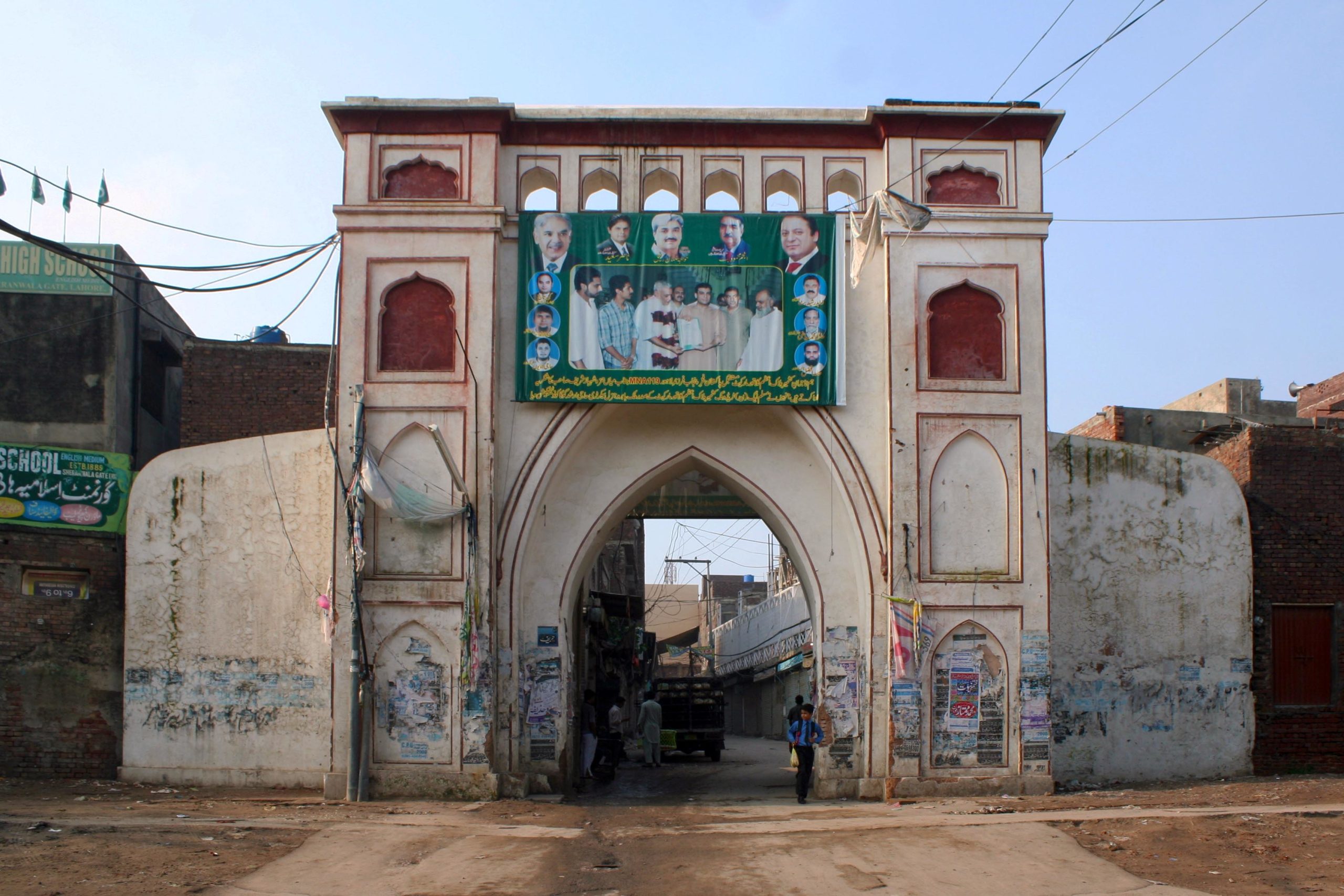
Shairanwala Gate is not located within Lahore Fort but is a historic gate of the walled city of Lahore, which is adjacent to the Fort. It was built during the Mughal era in the 17th century and served as one of the 13 gates of the walled city.
The Shairanwala Gate is a grand structure, with a height of around 60 feet. It is decorated with intricate carvings and calligraphy, reflecting the Mughal-era architectural style. The gate’s façade is adorned with a variety of decorative elements, including geometric patterns, floral motifs, and verses from the Quran.
The Shairanwala Gate leads to a bustling bazaar and several historic landmarks, including the Badshahi Mosque and Lahore Fort. The gate has witnessed many historic events, including the Siege of Lahore by the Sikhs in the early 19th century.
Today, the Shairanwala Gate is one of the main attractions of the walled city of Lahore and continues to attract tourists from around the world. The gate serves as a reminder of the city’s rich history and cultural significance and is a testament to the Mughal-era architectural grandeur. Visitors can explore the gate and the surrounding bazaar and learn about the history and culture of the region.
Gurudwara Naag Temple:

The Gurudwara Naag temple is a Sikh temple built by Chand Kaur. Chand Kaur is the wife of Kharak Singh, and she was the daughter-in-law of the then ruling Maharaja Ranjit Singh. The temple was built to commemorate the Guru Gaddi (spiritual seat) of the Sikh religion, which was transferred from the house of Guru Hargobind to that of Guru Har Rai, son of Guru Hargobind.
Mai Jindan Haveli:

The Mai Jindan Haveli is in the heart of the city of Amritsar and is right amid the most sacred landmark of the Sikhs. The building has a very intricate and beautiful design and is believed to have been constructed by the Mughal Emperor Shah Jahan but was attributed to the Mai Jindan or Maharani Jindan.
Conclusion
Lahore Fort is a historic fort in Lahore, the capital of the Pakistani province of Punjab. The Mughal Emperor Akbar built the Fort in 1574 AD. The Fort is best known for being the birthplace of the founder of the Sikh Empire, Maharaja Ranjit Singh. The Lahore Fort is in the Walled City of Lahore, Pakistan. It is situated at the northern end of Lahore‘s old walled city, near the Lahore Museum. Lahore Fort has a perimeter of about 1 kilometer. The Mughal Emperor Akbar built the Fort in 1574. The Fort was built to keep an eye on the rebel Pashtun tribes, the Khudai Khidmatgar, in nearby villages. The Mughal Empire had already reduced the Khudai Khidmatgar to a non-threatening condition when the Fort was built.